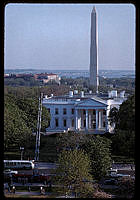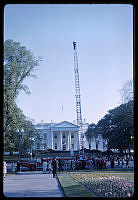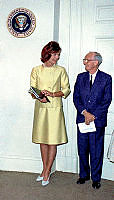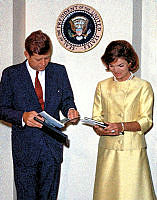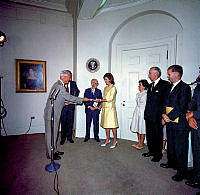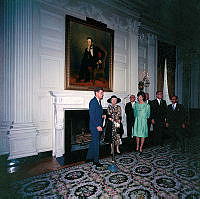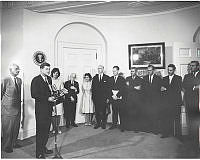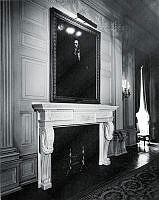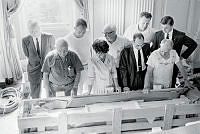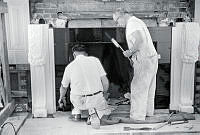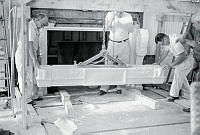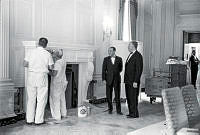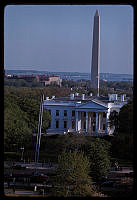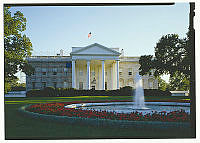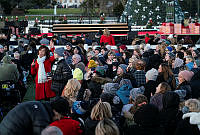The West Wing: 1900-1924
Copyright © White House Historical Association. All rights reserved under international copyright conventions. No part of this article may be reproduced or utilized in any form or by any means, electronic or mechanical, including photocopying, recording, or by any information storage and retrieval system, without permission in writing from the publisher. Requests for reprint permissions should be addressed to books@whha.org
1902: A White House "restoration" was undertaken. Under Theodore Roosevelt, the 19th-century conservatories were razed, and a new "temporary" executive office building, later called the West Wing, was erected. President Theodore Roosevelt worked in his new rectangular office for the first time on November 5. The first cabinet meeting was held in the new wing on November 6.
1909: The West Wing was doubled in size and included the first presidential Oval Office centered on the south facade. William Howard Taft became the first president to work in the Oval Office.
1912: On February 14, President Taft signed legislation in an Oval Office ceremony authorizing statehood for Arizona and New Mexico. He became the first chief executive to preside over 48 states.
1917: President Wilson signed the declaration of war against the Central Powers on April 7. The Executive Office Building immediately became a war center open around the clock as 60 to 75 clerks and other personnel manned the telegraphs, telephones, and the equivalent of a map room.
1923: Warren Harding became the first president to die in office since the construction of the executive offices. His desk in the Oval Office was draped with black crepe in memoriam.













